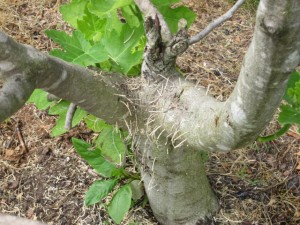What to Watch For: Ambrosia Beetles in Perennial Fruit Crops
go.ncsu.edu/readext?302895
en Español / em Português
El inglés es el idioma de control de esta página. En la medida en que haya algún conflicto entre la traducción al inglés y la traducción, el inglés prevalece.
Al hacer clic en el enlace de traducción se activa un servicio de traducción gratuito para convertir la página al español. Al igual que con cualquier traducción por Internet, la conversión no es sensible al contexto y puede que no traduzca el texto en su significado original. NC State Extension no garantiza la exactitud del texto traducido. Por favor, tenga en cuenta que algunas aplicaciones y/o servicios pueden no funcionar como se espera cuando se traducen.
Português
Inglês é o idioma de controle desta página. Na medida que haja algum conflito entre o texto original em Inglês e a tradução, o Inglês prevalece.
Ao clicar no link de tradução, um serviço gratuito de tradução será ativado para converter a página para o Português. Como em qualquer tradução pela internet, a conversão não é sensivel ao contexto e pode não ocorrer a tradução para o significado orginal. O serviço de Extensão da Carolina do Norte (NC State Extension) não garante a exatidão do texto traduzido. Por favor, observe que algumas funções ou serviços podem não funcionar como esperado após a tradução.
English
English is the controlling language of this page. To the extent there is any conflict between the English text and the translation, English controls.
Clicking on the translation link activates a free translation service to convert the page to Spanish. As with any Internet translation, the conversion is not context-sensitive and may not translate the text to its original meaning. NC State Extension does not guarantee the accuracy of the translated text. Please note that some applications and/or services may not function as expected when translated.
Collapse ▲Damage from a cold winter can take a while to become apparent. During the summer, I often receive several about beetle damage in perennial fruit plants. When images accompany these questions, it is clear who the culprit likely was.
The distinctive “frass toothpick” extending from holes is due to feeding from granulated ambrosia beetles. Typically, these insects are attracted to stressed plants are likely keying in on trees, bushes, or vines that sustained freeze damage this winter. They are also attracted to plants with “wet feet”, so good water management can often reduce attraction. Once beetles are present in plants, there is no effective management tool. Steve Frank, who works on ornamental plants, has done work on timing of preventative treatments, which can be quite effective. However, in most fruit crops, ambrosia beetle attack is a symptom, rather than the cause, of a problem. If the underlying issue is water management, then drainage or irrigation should be improved. If the issue is a freeze damaged plant, then the plant may succumb to its other injuries regardless of preventative treatment for ambrosia beetles. Therefore, growers should consider if the cause of the stress can be managed before undergoing an extensive management program.
More information
How to beat the beetles – American Nurseryman
Granulated ambrosia beetles – Entomology Pest Note



